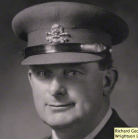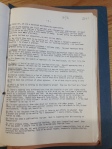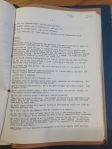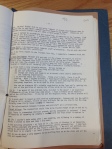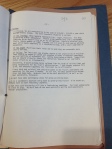November 1976: Earl’s Court – Haywood & Napier, Nucleus & Albany Trust

Playland was originally ‘For Money or Love’ in the US -Playland is the UK published and extended for the British Market focusing on London, Bradford, Manchester, Leicester and Brighton
On a cold Sunday afternoon, Robin Lloyd, a US based NBC photo-journalist at the time of writing ‘Playland’ in 1975/6, walked around Times Square, in particular looking in two amusement arcades. With a ‘guide’ who knew the ‘scene’ he counted 75 boys as available, under 16, in a period of 1 hour with no duplications. He describes the same ‘test’ undertaken in England’s capital city:
“In London, the figure was much lower partly because, I suspect, the heat was still on in the West End from the Playland scandal. At the Piccadilly Underground station, a well established hangout for hustlers, at least a dozen or so boys were readily available at all times. The traffic moved almost as if it had been choreographed. For a period of time, the boys would stand and wait. When police officers appeared, a clockwise move started. Everyone moved in a circle. There was a sudden and tremendous interest in the Underground maps on the walls. Small figures would hasten towards the innumerable exist. They would return later. In the interim, they’d work the surface streets; the area in front of the Regent Palace Hotel or the coffeehouses across the street from Playland. Playland itself is a model of efficient control, not – one suspects from any concern for morality – but rather for money. Security guards watch constantly and those in the know say they are aided by what are called ‘the vigilantes’, plainclothes operators paid to keep things under control. They do it, too… ——- As a test, I decided to see how many boys I could talk to – boys on the game – in a four hour period including travel time to Euston station, Victoria Station and Piccadilly. I spoke to fourteen. All were under sixteen years of age; a diverse group.” “For the active chicken hawk, these boys are prime material not only for sex but for referrals to others. If a man is looking for a fourteen-year old boy, the best way to make contact is to ask a sixteen-year old boy. He will surely know someone younger, – quite often, his brother. These boys often stay away from the West End because of police activity. But other areas, like Earl’s Court and Shepherds Bush flourish and observers note that the action is gradually drifting back to Central London.” [p.202 – p.203]
Three weeks before the Albany Trust was to be found batting away Whitehouse’s allegations against the Trust’s Youth Worker, and ‘John’ had been co-drafting ‘Paedophilia: Some Questions and Answers’ in first draft, Haywood was busy convening an exciting new ‘informal’ venture at Earl’s Court, gathering a group of colleagues together to form a ‘Working Party’. Around the same time as Robin Lloyd was researching and writing his extended British version of ‘Playland’ the group had been established to investigate whether the provision of teenagers was being catered to by existing gay groups in Earl’s Court. Ric Rogers, Youth Worker for the Albany Trust was to act as Secretary. Albany Trustee, the Hon. Lucilla Butler, daughter-in-law of former Conservative MP who held 3 out of 4 of the premier offices of state Lord Butler (RAB) took a leading role. As did the Paedophile Information Exchange’s Charles Napier.
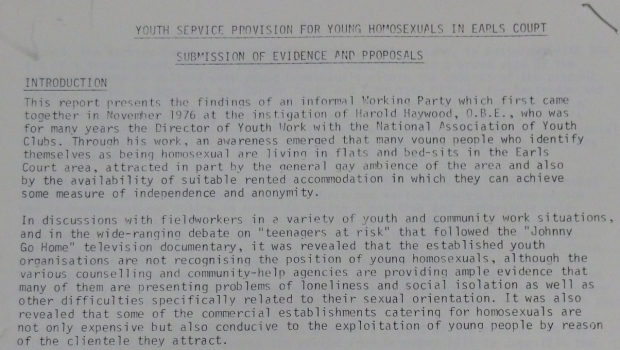
Youth Service Provision for young homosexuals in Earls Court: Submission of Evidence and Proposals ‘teenagers at risk’ ‘Johnny Go Home’

Sir Harold Haywood’s Working Party
TOP MEN FACE CHARGES IN VICE NET ROUND-UP (News of the World, 21st September 1975) Dozens of arrests are expected after the Director of Public Prosecutions has acted on a detailed dossier on illegal homosexual activities. Some of the men involved are celebrated in show business, others are top names in the financial world. The arrests will come in the wake of a vice trial at the Old Bailey. Five men guilty of indecency offences involving boys will be sentenced tomorrow. At the core of the case is an amusement arcade called Playland, near Piccadilly Circus in London. Police have interviewed 152 boys, many of them “Johnny Go Home” runaways, whose search for the bright lights ended in enticement and male depravity. The vast investigation began 18 months ago. It was then that one of the men involved told me he wanted to co-operate with the police because he resented the way “some very big names” were taking advantage of young boys. The informant and I went to Commander David Helm, head of the West End Central police force. Watch was kept on Playland. And a network of vice was uncovered. Pressure was building up yesterday for the closure of Playland and any other arcades where perverts might prowl. Mr William Molloy, Labour MP for Ealing North, said: “The Old Bailey trial points to the need for immediate co-operation between local authorities, the police and the managements of these arcades.” If this was not given, the arcades must be closed, he said. The licences of Playland and six other arcades are to be reviewed by Westminster City Council’s licensing sub-committee on Friday.
If 152 boys potentially with information on public figures as ‘clients’ were going to move to either Earl’s Court or Shepherd’s Bush – and quite possibly start talking – action was going to have to be taken to round them up and secure their silence. The fact that their silence was successfully secured seems to be apparent by the lack of prosecution of celebrated show business types or top names in the financial world in 1976. In November 1975, no sooner had the Playland Trial No 2 ended with the conviction of Charles Hornby and his associates, then within 6-8 weeks Napier had started the Earl’s Court Gay Help Service. 

Nov 1976: Youth Service Provision for Young Homosexuals in Earl’s Court, Submission of Evidence & Proposals, Appendix III from Nucleus
In Harold Haywood’s working group with Napier was Danny Franco (a detached youth worker with the Pitt Street Settlement in Peckham), Chris Heaume (Joint Council for Gay Teenagers), Mrs Lucille Butler (RAB’s daughter in law, Albany Trustee who knew Haywood through NAYC Youth Work), Roland Jeffery (NCCL Gay Rights Committee with Nettie Pollard) along with Ric Rogers, Albany Trust Youth Worker as the Group’s Secretary. During 1976 the National Council for Voluntary Youth Services (N.C.V.Y.S.), Haywood as Executive Committee Member, had set in motion a report on ‘Young people and homosexuality’. On publication of the NCYVS report Haywood had decided to instigate a further report focused on the Earl’s Court area – which as a result of the police activity in Piccadilly Circus and publicity of the Playland Trial was attracting more of the high-end clientele than usual.
“Generally speaking they are aged between 15 and 21, are predominantly male and have come from the provinces (especially Northern England, Ireland and Scotland). They have come to London in search of employment and a new life, or have run away from a complex family situation. There have been indications that Earls Court is now an alternative to the West End for such young people.”[i]
Nucleus – otherwise known as Earl’s Court Community Action Ltd had been established in 1974 with a grant from Fondation Rejoindre, independent of government aid. It supported a holiday-play group for local children and a support group for single mothers. Situated on the Old Brompton Road, SW8, Napier in establishing his gay group counselling service at Nucleus drafted a peculiar manifesto:
“Informal social contacts between counselors would help further to foster the Gay Group’s aims, while the introduction of clients into a counsellor’s private social circle should be considered as a very helpful way in which to befriend a client. A rather more long-term outcome of the Gay Group’s activities might be the setting up of a commune, with some of the counselors as a nucleus, in which could be pursued alternative life-styles to those prevailing in gay ghettos.”
Two of the people thanked by Playland’s Robin Lloyd, in a long list of names, are members of Haywood’s Working Party with Napier – Danny Franco at the Pitt Street Settlement and Roland Jeffery, listed not in his NCCL Gay Rights Committee capacity (see below), but as general secretary of ‘Friend’ London – as well as thanking the West Yorkshire Metropolitan Police Force as a whole. London Friend’s address from 1975 was Peter Righton’s home at 48 Barbican Road, Greenford (near Ealing, West London) (source Ealing Local History through Martin Walkerdine) [see further Ian Pace’s blog for a detailed biography of Peter Righton here: Peter Righton – His Activities up until the early 1980s ]

NCCL Ballot Biographies excerpts
Another person Robin Lloyd thanks is Detective Inspector Dick of Catford Police Station, for he had been one of the officers ‘heading up the strike force in the West End when Playland’s operation ended up in the courts”. It’s not clear whether he worked at a different West End police station at the time, watching Playland for 18 months but interesting to reflect on what Catford police knew about ‘millionaires, titled and influential people’ paying to abuse boys 12 years before the murder of Daniel Morgan

Playland, p.180
On Monday 22 August 1977, just before Harold Haywood departs Albany Trust to create the Prince’s Trust for Young People for Prince Charles, Charles Napier is discovered by Kensington & Chelsea Council to be the Treasurer of the Paedophile Information Exchange. How is not yet known. The response of Nucleus outlined below is remarkable. They require Napier to take a holiday to get over the stress and only resign his official position not his membership of PIE. “They were satisfied with his replies and there is no reason to suppose that his work for Nucleus has been influenced by his own connection with PIE.” The fact that he was sitting on a Working Party led by a man, Harold Haywood, who had been working with the Albany Trust to co-produce PIE and PAL’s Paedophilia: Some Q&A (which stated without pedophiles there would be no youth services and so they were a benefit to society) was not known necessarily to anyone else but the Albany participants involved: Hon Mrs Lucilla Butler, Ric Rogers the Youth Worker and Harold Haywood, Chairman, later to be knighted for his services to children’s charities.
Daily Telegraph, 25th August 1977
“A leading member of the Paedophile Information Exchange – the group seeking to legalise sex between adults and children – is employed as administrator of a young person’s welfare organisation. The management council of Nucleus which receives a grant from Kensington & Chelsea Council discovered three days ago that the man, Charles Napier, was treasurer of PIE in his spare time. It decided to require him to resign his treasurership but not his membership of PIE. It declined his offer to resign from Nucleus and sent him on leave.
Mr John Dodwell, the Chariman who is a chartered accountant, said yesterday: “If we thought his work was putting children at risk we would have no hesitation in sacking him.” The management council’s decision angered several councillors on the Conservative-controlled Kensington Council which granted Nucleus £3,765 this year.
Mr Robert Orme, a councillor for 21 years: “At the next council meeting in October I shall call for discontinuing the grant forthwith. While I am not bringing any allegation against the person concerned, I consider that a group which employs a man who supports the idea of PIE is not suitable to be chief administrator of a group that organises among its activities, under-fives and youth groups. The fact stressed by the management council that Mr Napier has nothing to do with running juvenile groups means nothing. As an administrator in charge he can move freely throughout the classes. Mr Napier has been administrator of Nucleus which is registered as a charity with premises in Old Brompton Road for three years. In a statement Mr Dodwell said the management council wished to make it clear that Nucleus had never had any connection with PIE and that Mr Napier’s connection was a personal one. While firmly believing that an employee’s private life was his own affair the council had questioned him closely about his involvement with PIE and his own attitude. They were satisfied with his replies and there is no reason to suppose that his work for Nucleus has been influenced by his own connection with PIE. His work has been ‘extremely satisfactory’. The council had requested him to resign all offices in PIE “as they feel that public opinion will require a clear breach with PIE to be demonstrated. In view of the stress that recent events have placed on him they also required him to go on holiday. On his return he will continue to be employed primarily in administrative work.”
The council disclosed that Mr Napier had expressed his intention in March to leave Nucleus within the next 12 months. Nucleus defines its objective as caring for those in social need in Earl’s Court, encouraging community awareness and encouraging people to help themselves and one another. A Gay Help Service was begun in 1975 to help homosexuals ‘with personal difficulties’. It has a staff of 12 and about 80 voluntary workers. The built of its income came from a Swiss charity, Fondation Rejoindre which allocated £19,750 for the year ending last March, the last of a three year grant. The Calouste-Gulbenkian Foundation has allocated £8,000 for the next two years. Other money has come from trusts and individual donations. PIE has run into trouble over the venue for its meeting next Thursday. The booking of a room at the Shaftesbury Avenue was rescinded after 17 other bookings were cancelled and the staff threatened to walk out. Meanwhile Mr Stainton Conservative MP for Sudbury and Woodbridge who had previously referred the organisation to Mr Rees, Home Secretary, has written to him urging that PIE’s plan to hold the meeting is adequate grounds for the matter to be re-examined by the Director of Public Prosecutions.”

Chelsea News, 21 October 1977
Sir Nicholas Scott was the Conservative MP for the borough (then Chelsea) at the time. He had served as Sir Robert Carr’s PPS in 1972 during the first Playland Trial No 1, moving to become Willie Whitelaw’s PPS in Employment before losing his Paddington South seat in February 1974, and was given the safe seat of the Royal Borough as a candidate, winning in October 1974.

The Times, Latest Appointments, 21 October 1977 Haywood’s new job is announced, no mention of being Chairman of Albany Trust

The Times Court Circular, 2 December 1977
How Prince in mufti watched the Waterloo dossers – Prince of Wales visits South Bank
Times, The (London, England) – Friday, October 25, 1985
Author: ROBIN YOUNG
The Prince of Wale’s concern about young people in inner-city areas has extended to a midnight expedition to see young dossers sleeping on cardboard boxes beneath Waterloo Bridge.The Prince’s visit to the South Bank, where concert-goers pick their way past inert figures wrapped in urine-soaked blankets, was described yesterday by Mr Harold Haywood , director of the Royal Jubilee and Prince’s Trusts.Mr Haywood said that the Prince’s concern about the young in inner city areas, highlighted after interviews given by his architectural adviser, Dr Rod Hackney, was not new. ‘It goes back years’, MrHaywood said. ‘From when we had the first disturbances in his wedding year, 1981, His Royal Highness has been very concerned to ask what we could do in co-operation with others to alleviate stress and help the young’. The Prince spent two hours from about 11 pm one night last November under the arches at Waterloo, Mr Hayood disclosed. ‘He was not in disguise but wore mufti – a sports jacket and flannels. He did not approach any of those sleeping rough because he thought that would be impertinent. Nobody recognized the royal visitor. He was accompanied by three advisers, a security man and a driver. Afterwards he spent a considerable time at Centrepoint, the charity which provides contact and support for youngsters arriving in London, and made an unannounced visit to the Alone in London Hostel at Kings Cross, where young people thronged to tell him their problems. Last June he visited accomodation for older down-and-outs. ‘The object was to brief himself’, Mr Haywood said, ‘and as a result of all that he is now making two of his own properties available to us, so that in due course we will be able to offer overnight accomodation for such youngesters and maybe something in the longer term. He would not disclose which properties the Prince was making available, but said that they would be converted into flats. Confirming that Prince Charles had frequently expressed concern about the inner cities, Mr Hayward added that he had never blamed any government, although ‘he certainly believes that more could be done’. Asked if the Prince regarded the provision of work as the first priority, Mr Haywood replied: ‘It is bound to be at the top of everybody’s list, but there are other things. Buckingham Palace yesterday assured the Prime Minister, who is in New York, that there was no question of the Prince criticizing the Government. Dr Hackney, who reported the gist of conversation last Monday, has denied some quotations attributed to him, particularly that the Prince had said that he was worried that the country would be divided when he became King. The editor of the Manchester Evening News which carried the first interview with Dr Hackney, maintained the accuracy of his paper’s story.
Court and Social: Luncheons
Times, The (London, England) – Wednesday, May 14, 1986
National Children’s Home Viscount Tonypandy, Chairman of the National Children’s Home, presided at a ‘Children in Danger’ luncheon held yesterday at the Travellers’ Club and received a gift from Mr John O’Connell. The guests included Lord Romsey, Mr Harold Haywood , Mr Derek Nimmo, Mr O. E. A. J. Makower and Mr Brian Macarthur.
-
18 Jul 2014, Mirror – A claim that Labour peer Viscount Tonypandy raped a nine-year-old boy is … The alleged victim said he was abused at home in the late-1960s …
-
19 Jul 2014, Guardian – South Wales police look into allegations against late Labour peer …Viscount Tonypandy, who worked as a teacher before becoming an MP, …
-
19 Jul 2014, Daily Mail – Alleged victim claims he was abused in his Cardiff home in the late … Police are investigating claims that Viscount Tonypandy, seen here in his …
[i] ILEA/Nucleus draft job description for detached youth worker, 23 September 1976










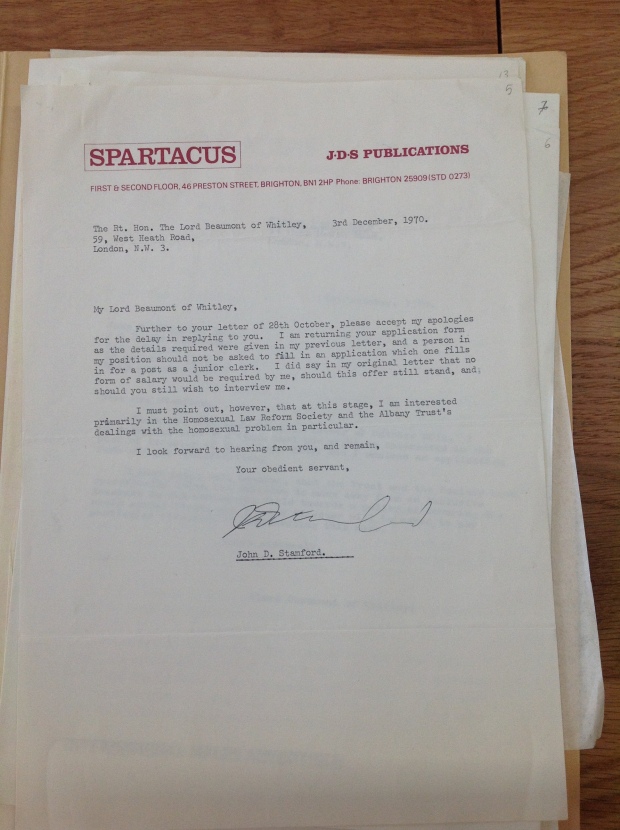




























 – The Rt. Hon Charles Morrison M.P.
– The Rt. Hon Charles Morrison M.P.

